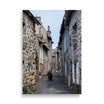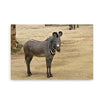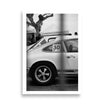Is Photography an Art? Analysis and Perspectives
Introduction
Since its invention in the 19th century, photography has sparked much debate over its legitimacy as an art form. Is it simply a mechanical technique for reproducing reality, or is it a true artistic expression capable of rivaling painting, sculpture, and other art forms? This article explores this question by examining the history of photography, the arguments of critics and defenders, and the changing perception of photography in the art world.
The History of Photography: From Technical Origins to Artistic Expression
1. The Invention of Photography
Photography was invented in the early 19th century by pioneers such as Nicéphore Niépce, Louis Daguerre, and William Henry Fox Talbot. In its early days, photography was primarily seen as a scientific technique for capturing images of the real world with unparalleled precision. The daguerreotype, for example, offered a sharpness of detail that painters could not achieve.
2. The First Controversies
Soon after its invention, photography sparked debates about its place in the art world. Some considered it lacking in creativity and merely a mechanical tool for reproduction, while others saw it as a revolutionary means of artistic expression.
3. The Evolution of Artistic Perception
Over the decades, photography has gradually gained recognition as an art form. Photographers such as Alfred Stieglitz, Ansel Adams, and Henri Cartier-Bresson have demonstrated that photography can capture not only precise images, but also emotions, complex compositions, and personal views of the world.
Photography as an Art Form
1. The Photographer's Eye
One of the major arguments in favor of photography as art is the role of the photographer as an artist. The photographer does not simply capture an image; he or she chooses the subject, composes the scene, plays with light, and uses framing and post-processing techniques to express a unique vision.
2. Creativity in Photography
Photography offers endless creative possibilities. Whether through experimentation with techniques like double exposure, soft focus, or lighting effects, photographers can transform a simple image into a work of art. Movements like surrealism in photography show how artists use this tool to explore complex and abstract themes.
3. Photography and Abstraction
Abstraction in photography is further proof that the medium goes far beyond simply reproducing reality. Photographers can capture shapes, textures, and patterns that are not immediately recognizable, creating works that invite interpretation and reflection, much like abstract painting does.
Criticisms of Photography as Art
1. Photography and Objectivity
Some critics argue that photography, as an automatic capture of a scene, lacks the subjective element necessary to be considered art. Unlike painting or sculpture, where the artist interprets reality, photography is seen as a simple objective reproduction of it.
2. The Impact of Digital Technologies
With the advent of digital photography, some art purists criticize the ease with which images can be manipulated, questioning the authenticity and artistic value of modern photographs. The excessive use of software like Photoshop, they argue, dilutes the distinction between art and simple image manipulation.
Photography in the Contemporary Art World
1. Exhibitions and Galleries
Today, photography occupies an important place in art galleries and museums around the world. Exhibitions dedicated to contemporary and historical photographers attract thousands of visitors, and photographic works are sold at auction at prices comparable to those of paintings and sculptures.
2. Awards and Recognitions
Photography awards such as the Prix Pictet, the Prix Niépce, and the World Press Photo honor the best photographic works each year, highlighting the growing recognition of this medium as a major art.
3. Photography and Social Media
With the popularity of Instagram and other image-sharing platforms, photography is more accessible than ever. While this has democratized the creation and sharing of images, it also raises questions about quality and originality in a sea of visual content.
Conclusion: Is Photography an Art?
The question of whether photography is an art may seem anachronistic in the contemporary context where the medium is widely recognized as such. However, this debate highlights the complexities and nuances of artistic creation. Photography, as a means of expression, is just as legitimate as painting or sculpture. It offers endless possibilities to capture reality, explore the imagination, and express emotions in unique ways.
Ultimately, what determines whether a photograph is a work of art lies in the artist's intention, the message conveyed, and how it resonates with the viewer. Photography is art not only because of the images it produces, but also because of the impact it has on our perceptions, emotions, and understanding of the world.
FAQs
What makes photography an art?
Photography is considered an art when the photographer uses his or her talent to capture a unique vision, playing with light, composition, and creative techniques to express an idea or emotion.
Is digital photography less artistic than analog photography?
Digital photography offers many creative possibilities, and while it allows for easier manipulation, it is no less artistic. What matters is the artistic intention behind the image.
Why was photography contested as an art in its early days?
Photography was challenged because it was seen as a simple mechanical reproduction of reality, unlike painting or sculpture, where the artist interprets and recreates the world according to his vision.
How did photography gain its place in the art world?
Thanks to the work of pioneers like Alfred Stieglitz and Ansel Adams, who demonstrated that photography could capture complex emotions and compositions, it gradually gained recognition as a legitimate art form.
Can photography be abstract?
Yes, abstract photography is a genre where photographers capture shapes, patterns, and textures in a non-representational way, creating works that invite interpretation, much like abstract art in other mediums.




































































Leave a comment
All comments are moderated before being published.
This site is protected by hCaptcha and the hCaptcha Privacy Policy and Terms of Service apply.